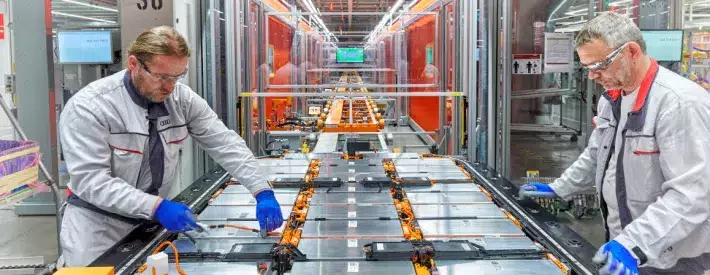Why EV battery recycling is the next crucial stage in electrification

If you needed a sign that the path to electrification is gaining pace, the UK market for EVs surpassing one million vehicles earlier this year was probably it.
But as the industry prepares for a future where an increasing number of vehicles will be powered by something other than combustion engines, it also needs to start looking at how to make sure those vehicles stay on the road for as long as possible, and prepare processes and systems to re-use and recycle those that reach the end of their useful automotive life.
It’s a topic that Andy Latham, Founder and CEO at Salvage Wire spends more of his time working towards
“I work as an EV trainer for a wide variety of organisations; vehicle dismantlers, recyclers, and battery recyclers at one end, and the universities and research bodies looking at technology coming down the line and everyone in between,” said Latham while speaking at the latest IMI engineering webinar produced exclusively for members with CAE or AAE recognition.
The amount of upskilling required to prepare the sector for a greater number of electrified vehicles is well known, whether that’s simply realising if there are orange cables you’re dealing with high-voltage components, to getting IMI TechSafe qualified so you’re able to work on the vehicles coming into the workshop.
Future usage
For those working in the vehicle recycling space, what makes EVs different and what do you do with them – more specifically with the battery, often the single most expensive component on an EV.
“The first thing we do is test and assess. Try to put a scan tool on it to get data about the battery, so we can identify the condition. Then, we have the four R’s: re-use, re-manufacture, re-purpose and recycle,” said Latham.
Re-using an EVs battery is perhaps the most obvious thing to do. As Latham said there’s a growing restomod sector that is turning classic vehicles into EVs. Everything from classic Mini’s, Land Rover Defenders and VW campervans are having their combustion engines removed and electric powertrains installed.
“[For] re-manufacturing, if we identify a fault on the battery before taking it out of the vehicle there’s a possibility we could take that battery apart and repair [it], get it back up to a good condition where it can be re-used,” said Latham.
The next option, and one that perhaps not many people realise, is that even when a EV’s battery doesn’t meet the requirements for automotive applications, they can be used in other industries. The final point in Latham’s list: re-purpose.
This usually happens when the capacity drops below 80%, but it’s at this point that others can benefit.
“A lot of these batteries have a second life. There is so much work going on around the world in getting these batteries into second life usage. Static storage for wind farms, solar and so much more,” said Latham.
An EV’s battery may spend 18 years powering a car, but it could spend another 30-40 years in a static installation helping to control the flow of power, storing it when there’s increased production levels and releasing it when supply needs to be increased.
Contact the team at hello@theimi.org.uk or call us on 01992 519 025 to discuss gaining CAE or AAE recognition which will give you exclusive access to engineering updates 4 times a year delivered by webinar or written paper.

